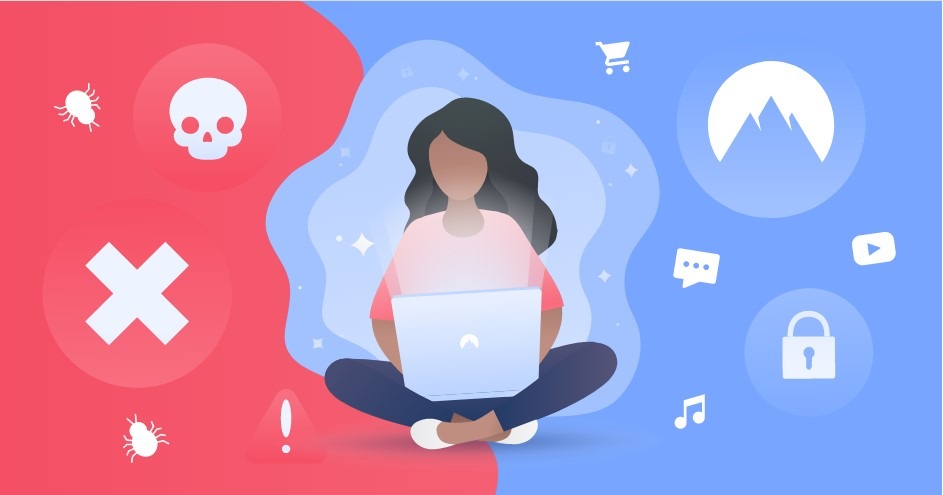In the evolving landscape of online threats, securing one’s browsing experience has never been more crucial. One of the most effective tools I use to safeguard my digital presence is a Virtual Private Network (VPN). While VPNs are often associated with online privacy and autonomy, they also offer robust mechanisms to block malicious websites, thereby enhancing my overall cybersecurity posture.

✅ Current deal: 🔥 Get NordVPN with up to 75% OFF! 🔥
Understanding the Threat Landscape
Malicious websites can range from phishing sites designed to steal personal information to those hosting malware that infects devices. In my experience, these threats often lurk behind seemingly innocuous links or ads. Using a VPN helps to mitigate these risks by providing a secure tunnel for my online activities, effectively obscuring my data from potential attackers while allowing me to take proactive measures against harmful sites.
How VPNs Block Malicious Websites
VPNs utilize various technologies and practices to filter out harmful content. I typically rely on features like DNS filtering and malicious URL blocking. These capabilities ensure that when I attempt to access a potentially harmful site, the VPN prevents the connection before my device interacts with the site.
-
DNS Filtering: My VPN reroutes DNS requests through secure servers that can identify and block harmful sites. This stage acts as my first line of defense.
-
Malicious URL Blocking: Many reputable VPNs maintain a blacklist of malicious websites. When attempting to access a site on this list, I receive an immediate warning, preventing me from reaching the potentially harmful content.
-
Encryption: By encrypting my internet traffic, the VPN not only provides privacy but also makes it harder for attackers to monitor my activities and devise targeted threats.
-
Location Masking: Using a VPN can change my IP address, making geolocation-based attacks less feasible while I browse.
Combining these features, I feel empowered to navigate the internet safely, knowing I have significant protective measures in place.
Selecting the Right VPN
Choosing an appropriate VPN provider is critical for effective malicious website blocking. I consider several factors when making my selection:
- Reputation: I always go for a VPN with strong positive reviews and a history of reliable service.
- Features: I look for features such as DNS filtering, a robust firewall, and an effective malware-blocking mechanism.
- Speed and Performance: The VPN should not significantly hinder my browsing speed. A good balance between security and performance is essential.
- User-friendly Interface: I appreciate a VPN that is easy to configure and use.
- Customer Support: Responsive customer support can be invaluable if I encounter issues or have questions.
My VPN Configuration Tips
In my experience, optimal configuration enhances the effectiveness of a VPN in blocking malicious websites. Here are some helpful tips I follow:
- Enable DNS Leak Protection: This prevents DNS queries from bypassing the VPN, ensuring all requests are filtered through the secure tunnel.
- Activate the Kill Switch: I use a VPN kill switch that cuts off internet access if the VPN connection drops, preventing accidental exposure to threats.
- Regularly Update the VPN Software: Keeping the VPN up to date ensures I benefit from the latest security patches and enhancements.
- Utilize Multi-Factor Authentication (MFA): If my VPN supports MFA, I enable it for an added layer of security, creating a more fortified environment.
- Custom DNS Settings: I sometimes use custom DNS settings provided by my VPN for improved privacy and security. These settings can further enhance the blocking of malicious sites.
- Monitor Traffic Logs: I regularly check my traffic logs for any abnormal activity. Although my VPN should protect me, staying vigilant is part of a comprehensive security strategy.
✅ Current deal: 🔥 Get NordVPN with up to 75% OFF! 🔥
Maintaining Security Beyond the VPN
Using a VPN to block malicious websites is an effective step toward ensuring my online safety, but I recognize it is just one layer of a multi-tiered security approach.
-
Browser Security: I always keep my browser updated and make use of privacy-focused extensions to enhance security further. Ad blockers can prevent malicious ads from appearing.
-
Use Antivirus Software: A robust antivirus program serves as another layer of protection, helping to detect and neutralize threats that might slip past the VPN.
-
Stay Educated: I frequently educate myself about common threats, phishing tactics, and the latest security trends. Awareness can prevent me from making mistakes that lead to vulnerabilities.
-
Regular Backups: I regularly back up important data to recover from potential malware attacks. This safeguards my information even in the worst-case scenario.
-
Be Cautious with Links and Downloads: I practice safe browsing habits by avoiding unknown links and being wary of downloading files from untrusted sources.
Conclusion
Leveraging a VPN to block malicious websites has significantly improved my cybersecurity defenses. Through DNS filtering, URL blocking, and stringent encryption, I gain confidence while navigating the digital realm. By carefully selecting a reputable VPN and employing specific configurations, I create a more robust security posture.
Always remember that utilizing a VPN is a significant step, but maintaining good online habits and education is equally crucial. Together, these strategies empower me to navigate the internet safely and securely, minimizing exposure to online threats.
Affiliate Disclosure: By clicking on our links, we may earn commissions at no additional cost to you.